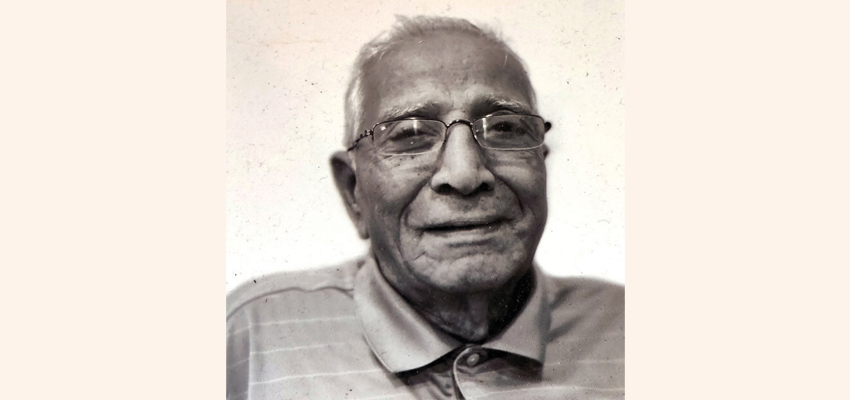If Adolf Hitler was the trigger for World War II, it is a villain no less than him, the invisible Coronavirus which has begun to wreak havoc this time
The unfolding drama on our television screens and internet sites are one of despair, drama and occasional flashes of hope as the Government tries to come to the rescue through supply-side guarantees and fiscal stimulus.
Even as India struggles to come out of the lockdown imposed by COVID, for many people in our country, this is the first time we have seen a problem of this scale and the rather disconcerting thought that often crosses the mind is “Hope it’s the beginning of the end of this problem and not just the end of the first beginning.”
The size of the havoc already wreaked on jobs and the economy is staggering. Since February this year, the world has shed over 15 trillion dollars of wealth and the global economy could shrink up to three per cent this financial year, with some pessimists believing that it could even be as high as five per cent. Indian GDP would have lost over ten per cent by the end of May and it will need a minor miracle to show positive growth this year and then climb back to our original hope of five per cent and more in the next fiscal.
India’s special problem of over ten million job losses in the month of April itself, albeit some on a temporary basis and the massive reverse migration that we are witnessing with collateral damage in the form of accidental and starvation deaths, may leave the economic recovery stalled. This is because as factories and construction activity wait for labor to return and there is a very real danger of prolonged disruption in supply and demand chains in the country. Worldwide, the ILO has warned of over 100 million job losses thanks to COVID and the overall impact on livelihoods is a nightmare to visualize.
In such times, it is good to take counsel from senior citizens in our midst who were witness to the last such destruction caused by World War II and I have had the good fortune to have conversations with two folks in their eighties who were in London and Kamptee respectively in that critical period. Young readers of this column may not know this, but the cause of that war was, of course, primarily the rise of nationalism in certain parts of the world and the strife caused by naked ambition and walls erected between communities and countries. We must be cautious of the fact that our own world in 2019 was suffering from many leaders who did not believe in free trade or the flat world, and global supply chains were being threatened by food export embargos and barriers to free trade. If Adolf Hitler was the trigger for the war then, it is a villain no less than him, the invisible Coronavirus which has begun to wreak havoc this time.
“Hope it’s the beginning of the end of this problem and not just the end of the first beginning”
London senior, Mr Baker reminds me that the World War took a toll of 70 million lives, with roughly half being soldiers and the rest civilians. Twenty million of those were in the Soviet Union with the siege at Leningrad itself causing over a million deaths due to starvation. And while European countries reported the biggest casualties, the Pacific was no less with China losing 16 million civilians, three hundred thousand falling to the Japanese Nanjing massacre and five hundred thousand lives lost when Chinese leaders opened a dam to stop the invaders, causing the 1938 Yellow River Flood.
Pondicherry senior, Mr S.V.Iyer recalls the “Gora Bazar” in Kamptee, just 12 km from Nagpur, then in Madhya Bharat and now part of Maharashtra. The bazaar was earmarked exclusively for white officers of the Army and Iyer recalls as a twelve-year-old boy, the extreme subservience to the “goras” for people to get what they needed to live through these troubled times. While Indian lives lost in the War were comparatively small, estimated at three million with under a 100,000 being soldiers, in other parts of Asia, civilians were slaughtered in villages. Slave labor became rampant in Korea and China and up to 400,000 women were forced into prostitution and sexual slavery, with ninety per cent of them dying in the war.
Clearly, those were extreme times and we can only hope that this scourge that has disrupted our lives vanishes or diminishes in the next few months and enables all of us to pursue a new narrative at life and work soon.
If there is one positive outcome we have seen in the last two months, it is the willingness of Governments, Corporates, NGOs, philanthropists and civil society to come together to support the poor in cities. In Pune, the Pune Platform helping the hospitals, the relief efforts of Pune City Connect, CYDA, members of the RSS and many others and the yeoman work done by Commissioners Gaikwad, Hardikar and the PMC response leader Rubal Agarwal have been inspiring.
One can only hope that this spirit of inclusion and help will continue and expand to the entire country and we will then approach the more arduous journey from relief to recovery to resilience, together.
